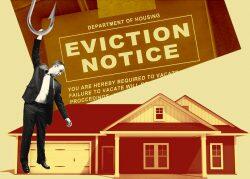
Trending
Rents rise across US, but fall in Greater LA, study finds
Median payment in metro region fell $4 to $3,047, according to Realtor.com data

Across the nation, big-city rents are rising – but not in Southern California, where monthly payments have edged downward in Los Angeles and the Inland Empire.
Median rent across the nation’s 50 largest metropolitan areas grew by $3 to $1,879 in July, the Los Angeles Times reported, citing data from Realtor.com. In metropolitan Los Angeles-Long Beach-Anaheim, rent fell by $4 to $3,047.
In the Riverside-San Bernardino-Ontario region, the median rent fell by $22.
The decline in one of the most expensive housing regions in the U.S. shows the market is cooling off – and the rest of the country could soon see similar relief, according to George Ratiu, senior economist and manager of economic research for Realtor.com.
For Los Angeles, year-over-year rent growth peaked in April at 22 percent, Ratiu said.
Since then, the region has seen a dramatic deceleration of rent growth, with prices in July up about 4 percent from a year earlier.
San Diego, San Jose and the Bay Area — the three most expensive metro areas in the country, followed by Los Angeles — continued to see increases in July, but the rates across the Golden State are encouraging, Ratiu said.
“I think it’s so relevant to look sometimes at individual markets because you get a different read,” Ratiu said. “The national picture looks homogeneous, but as we know, real estate markets are not homogeneous by any stretch.”
Nationwide, the pinch is felt across large cities, which saw an exodus of renters at the start of the pandemic, as well as suburbs.
“Whether in a downtown area or suburb, staying put or making a change, renters are stuck between a rock and a hard place when it comes to affordability,” said Realtor.com Chief Economist Danielle Hale.
According to a survey by Avail, a property management platform owned by Realtor.com, 60 percent of renters reported the leading cause of financial stress was increasing rental prices and household expenses.
More than half of renters who had been in their current apartments for one to two years had experienced a rent increase, with a median increase of $160 per month, according to the survey.
The $3 bump in median rent nationwide represented the 17th consecutive monthly increase, and a rise of 12.3 percent year over year.
Though median rent nationwide hit an all-time high in July, the increase over June’s median rent was the smallest so far in 2022. It also marked the lowest year-over-year growth since August 2021.
“I do think that what we’re seeing in California markets today, in a sense, pencils out the trajectory for the national rental markets,” Ratiu said.
— Dana Bartholomew
Read more





